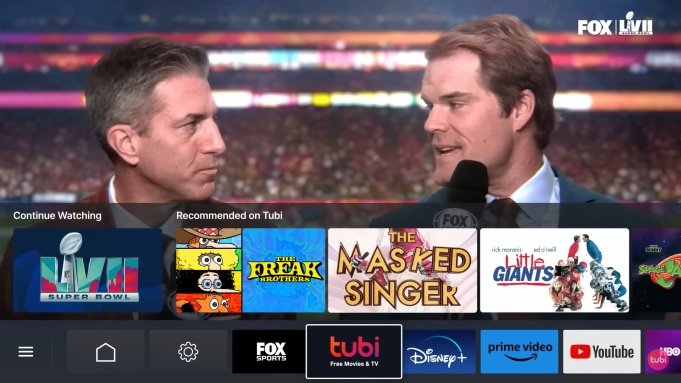Debunking the Effectiveness of Expensive Ads
Image Courtesy: Tubi
$7 million during Superbowl LVII. $720 thousand for the 61st Annual Grammy Awards in 2019. $2.2 million for the March Madness Championship Game in 2023. These copious amounts of money all reflect the cost of airing 30-second advertisements in between their respective broadcastings. In recent years, the price of advertisements during popular television broadcasts has surged, begging the question: are they really worth it?
Large TV spectacles often require obscene prices for advertisements, as companies assume these are the most effective times to get their message out to a wide range of viewership. Mitto, an omnichannel communications solution provider, conducted a survey in 2023 gauging the effectiveness of Super Bowl advertisements. They found that though 52% of consumers believed these Super Bowl ads would be a successful endeavor for the company, “these ads are still not driving a level of purchasing behavior to warrant a $7 million price tag,” said Jacqueline Barba of Path to Purchase Institute. Additionally, 41% of consumers surveyed stated they have made one to three purchases from expensive ads over the past five years, while 27% stated they haven’t made any purchases.
Generally, television advertisements have a large impact on consumer behavior, according to Delesign Blog. This impact can range from building up brand familiarity, trust, and confidence among the audience, to crucially persuading consumers to buy their products.
Not only are costs increasing to release ads during popular television broadcasts, but the cost to release ads on social media platforms such as Facebook and TikTok is also rising. Advertisers focus on the cost per thousand impressions (CPM) as a way to evaluate how much a company is paying for a certain amount of views or engagement with the ad. A study conducted by Insider Intelligence indicates that the average CPM for television ads has increased by 13.2% from 2008-2020. The CPM for social media used to be very low, but according to a recent report, Forbes states that Facebook ad costs have increased by 89% while TikTok’s CPM has increased by 92%.
Despite these increases, social media advertising has proved to be an effective method. 49% of internet users say they are likely to purchase from brands they see advertised on social media, according to a study conducted by GWI Consumer Insights. A clear advantage has been identified in using social media ads over television ads. Though television ads have the ability to target broad audience demographics, social media ads excel in “identifying niche markets,” as stated by Proffus, a Technology Solutions Provider.
These findings demonstrate that perhaps television advertising, especially during popular broadcasts, may not be as effective as brands believe they are. Though it may reach a large audience, television advertising does not reach the specific, niche, markets that social media advertising can get a hold of. Could social media be the best route to take? For some, they might be $7 million too late.
Lucy Arrow


